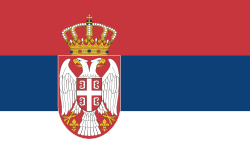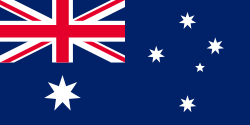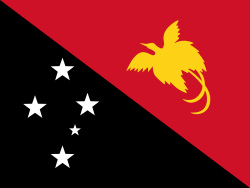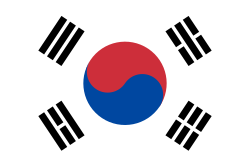Australian Open 2017 – čtyřhra juniorek
| Australian Open 2017 | |
|---|---|
| Vítězky: | |
| Finalistky: | |
| Výsledek: | 6–1, 7–6(7–4) |
| Soutěže | |
| mužská dvouhra (q) • mužská čtyřhra | |
| ženská dvouhra (q) • ženská čtyřhra | |
| smíšená čtyřhra | |
| dvouhra juniorů • čtyřhra juniorů | |
| dvouhra juniorek • čtyřhra juniorek | |
| dvouhra vozíčkářů • dvouhra vozíčkářek | |
| čtyřhra vozíčkářů • čtyřhra vozíčkářek | |
| dvouhra kvadruplegiků • čtyřhra kvadruplegiků | |
| Australian Open čtyřhra juniorek | |
| 2016 ◄◄ 2017 ►► 2018 | |
| Grand Slam 2017 čtyřhra juniorek | |
| Australian Open • French Open Wimbledon • US Open | |
Čtyřhra juniorek Australian Open 2017 probíhala ve druhé polovině ledna 2017. Do deblové soutěže melbournského grandslamu nastoupilo třicet dva párů hráček, splňujících kritéria juniorské kategorie. Obhájcem titulu byl rusko-slovenský pár Anna Kalinská a Tereza Mihalíková, které již v 18 letech nebyly způsobile ke startu.
Vítězem se stal třetí nasazený kanadsko-americký pár 16letých juniorek Bianca Andreescuová a Carson Branstineová, které ve finále zdolaly polskou dvojici Maja Chwalińská a Iga Świąteková po dvousetovém průběhu 6–1 a 7–6. Každá z vítězek získala premiérový grandslamový titul kariéry a do juniorského kombinovaného žebříčku ITF si připsala 270 bodů.[1]
Nasazení párů
 Emily Appletonová /
Emily Appletonová /  Jodie Anna Burrageová (čtvrtfinále)
Jodie Anna Burrageová (čtvrtfinále) Olga Danilovićová /
Olga Danilovićová /  Marta Kosťuková (2. kolo)
Marta Kosťuková (2. kolo) Bianca Andreescuová /
Bianca Andreescuová /  Carson Branstineová (vítězky)
Carson Branstineová (vítězky) Lee Yang /
Lee Yang /  Rebeka Masárová (2. kolo)
Rebeka Masárová (2. kolo) Caty McNallyová /
Caty McNallyová /  Natasha Subhashová (semifinále)
Natasha Subhashová (semifinále) Baijing Linová /
Baijing Linová /  Wang Si-jü (1. kolo)
Wang Si-jü (1. kolo) Čcho I-süan /
Čcho I-süan /  Juki Naitóová (2. kolo)
Juki Naitóová (2. kolo) Lea Boškovićová /
Lea Boškovićová /  Jelena Rybakinová (1. kolo)
Jelena Rybakinová (1. kolo)
Pavouk
| Legenda | ||
|
|
|
Finálová fáze
| Semifinále | Finále | |||||||||||
| 5 | | 4 | 6 | [7] | ||||||||
| 3 | | 6 | 4 | [10] | ||||||||
| 3 | | 6 | 77 | |||||||||
| | 1 | 64 | ||||||||||
| | 6 | 6 | ||||||||||
| | 2 | 1 | ||||||||||
Horní polovina
Dolní polovina
Odkazy
Reference
V tomto článku byl použit překlad textu z článku 2017 Australian Open – Girls' Doubles na anglické Wikipedii.
- ↑ O jucatoare de tenis cu origini din Romania a cucerit Australian Open la juniori [online]. Ziare.com, 2017-01-29 [cit. 2017-01-30]. Dostupné online. (rumunsky)
Externí odkazy
- Čtyřhra juniorek na Australian Open 2017 [online]. Australian Open [cit. 2017-01-27]. Dostupné v archivu pořízeném dne 02-02-2017. (anglicky)
Média použitá na této stránce
Flag of Canada introduced in 1965, using Pantone colors. This design replaced the Canadian Red Ensign design.
Chinese Taipei Olympic Flag. According to the official website of Chinese Taipei Olympic Committee, Blue Sky(circle) & White Sun(triangles) above the Olympic rings is neither the National Emblem of the Republic of China, nor the Party Emblem of Kuomintang (KMT), but a design in between, where the triangles do not extend to the edge of the blue circle, as registered at International Olympic Committee in 1981 and digitally rendered in 2013. Besides, the blue outline of the five-petaled plum blossom is broader than the red one. Moreover, the CMYK code of the blue one and the Blue Sky & White Sun is "C100-M100-Y0-K0", and different from the Olympic rings (C100-M25-Y0-K0). Note that it's the only version recognized by IOC.
Flag of Australia, when congruence with this colour chart is required (i.e. when a "less bright" version is needed).
See Flag of Australia.svg for main file information.The national flag of Kingdom of Thailand; there are total of 3 colours:
- Red represents the blood spilt to protect Thailand’s independence and often more simply described as representing the nation.
- White represents the religion of Buddhism, the predominant religion of the nation
- Blue represents the monarchy of the nation, which is recognised as the centre of Thai hearts.
Vlajka České republiky. Podoba státní vlajky České republiky je definována zákonem České národní rady č. 3/1993 Sb., o státních symbolech České republiky, přijatým 17. prosince 1992 a který nabyl účinnosti 1. ledna 1993, kdy rozdělením České a Slovenské Federativní republiky vznikla samostatná Česká republika. Vlajka je popsána v § 4 takto: „Státní vlajka České republiky se skládá z horního pruhu bílého a dolního pruhu červeného, mezi něž je vsunut žerďový modrý klín do poloviny délky vlajky. Poměr šířky k její délce je 2 : 3.“
Used color: National flag | South African Government and Pantone Color Picker
| zelená | rendered as RGB 0 119 73 | Pantone 3415 C |
| žlutá | rendered as RGB 255 184 28 | Pantone 1235 C |
| červená | rendered as RGB 224 60 49 | Pantone 179 C |
| modrá | rendered as RGB 0 20 137 | Pantone Reflex Blue C |
| bílá | rendered as RGB 255 255 255 | |
| černá | rendered as RGB 0 0 0 |























